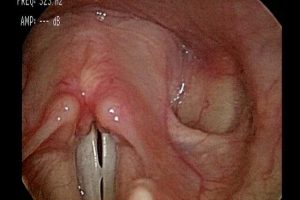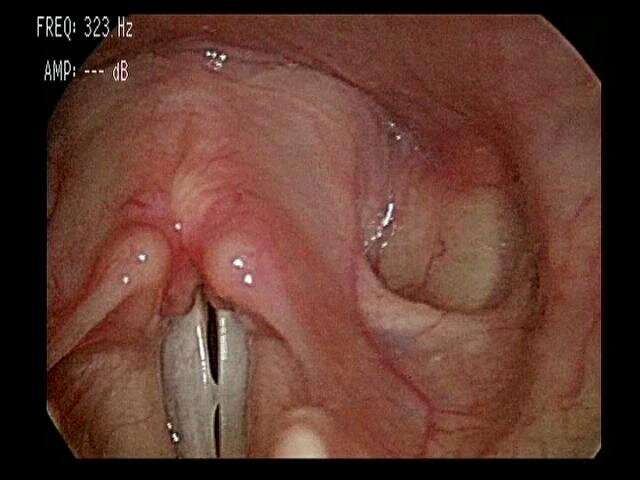New vocal injury study profiles hundreds of injured singers


An analysis of more than 400 singers who sought treatment at UT Southwestern Medical Center for vocal injuries provides a wealth of data on a topic that’s often considered taboo to discuss in the singing community.
The findings, published in The Laryngoscope, show that only 1 in 7 subsequently needed surgery for injuries that weren’t resolved with vocal therapy and other conservative management. Researchers determined which vocal injuries were most common by sex, age, training, and professional/amateur status, and what kinds of treatment these patients subsequently required.
“When you’re an injured singer, especially when you depend on singing for your livelihood, the stakes are really high. Injured singers are often reluctant to talk about their injury or ask questions among their colleagues or community because injuries carry a stigma,” said study leader Lesley Childs, M.D., Associate Professor of Otolaryngology-Head and Neck Surgery and Medical Director of the Voice Center at UT Southwestern. “There are many opportunities for misinformation, so we wanted to gather data to help dispel myths and counsel our patients on the facts.”
Toward that end, Dr. Childs and her colleagues, including UTSW resident physician Ashwin Rao, M.D., and Ted Mau, M.D., Ph.D., Professor of Otolaryngology-Head and Neck Surgery, reviewed charts of all singers who sought care for vocal injuries at the Voice Center between 2011 and 2019. A total of 438 patients between ages 8 and 78 who had never undergone prior surgery to correct vocal fold injuries were seen during this period.
Searching for patterns, the researchers discovered that the most prevalent injury by far was nodules, a callous-like injury that affected 58% of these singers, followed by blister-like injuries called pseudocysts, as well as polyps, cysts, and vocal fold hemorrhages. Although female singers were more likely to develop nodules and pseudocysts, polyps and cysts were more common in male singers. Polyps developed more frequently with age in female patients, while young male singers were more likely to develop nodules.
Dr. Childs and her colleagues found that professional status and a lack of prior vocal training were the greatest risk factors. Professional singers who had not taken voice lessons were eight times more likely to need surgery than amateur singers with prior voice lessons.
Although the increased risk among professional singers is probably due to the greater amount of singing time overall, the link with vocal training is unclear, Dr. Childs said. Training may increase vocal proficiency, and a history of voice lessons might make it easier for the injured to follow vocal therapy protocols.
Regardless, she added, the data can help physicians reassure patients who seek help at the Voice Center.
“For amateur and professional singers alike, vocal injuries can be devastating, but our study suggests that these injuries need not be career-ending,” Dr. Childs said. “With conservative management, most singers can get back on track.”
UT Southwestern’s Voice Center, one of the largest in the South, employs a collaborative, multidisciplinary team of voice care specialists to care for injured singers. Several members of the Voice Center are singers themselves: Dr. Childs is a classically trained soprano with experience in various professional chamber ensembles as well as recording for Walt Disney Records, and all six of the Voice Center’s speech language pathologists are singers.
Source: Read Full Article